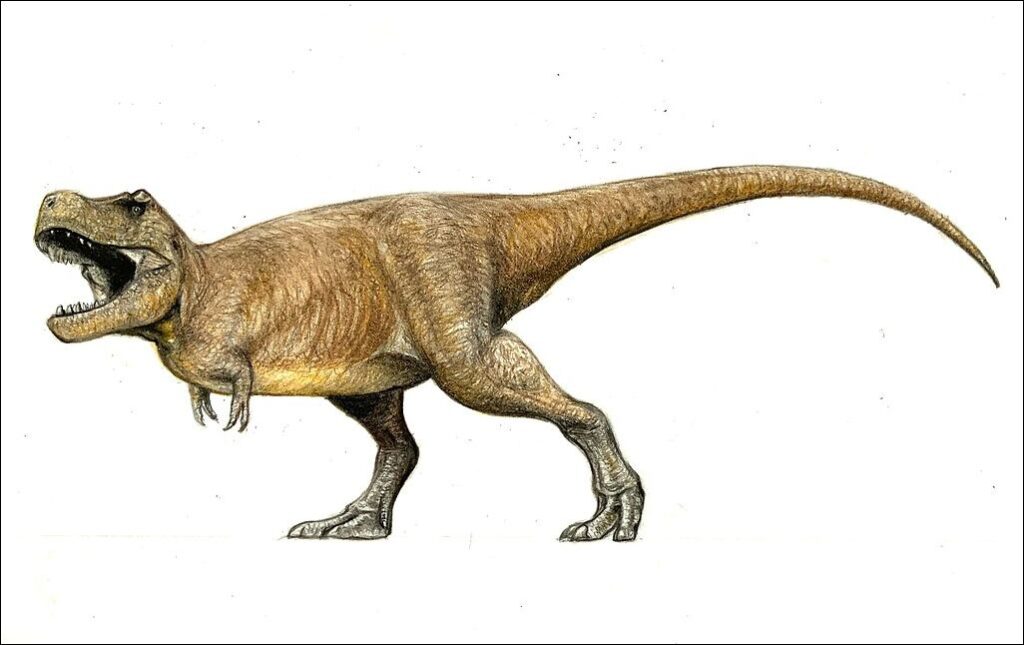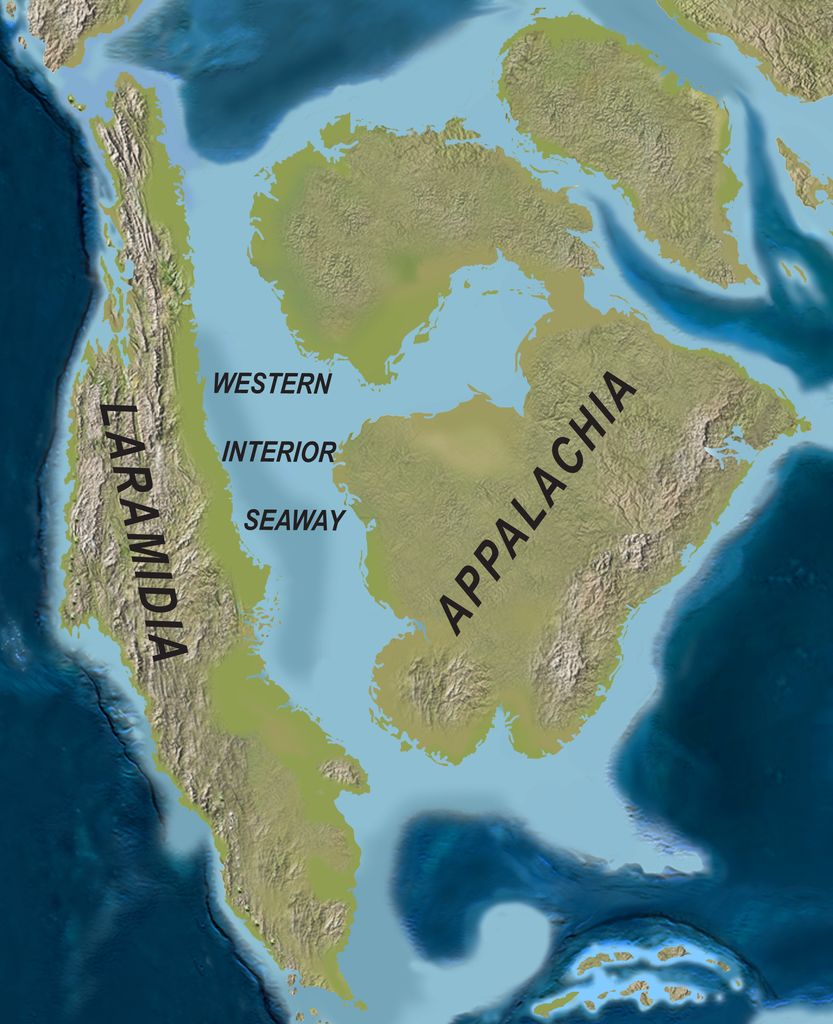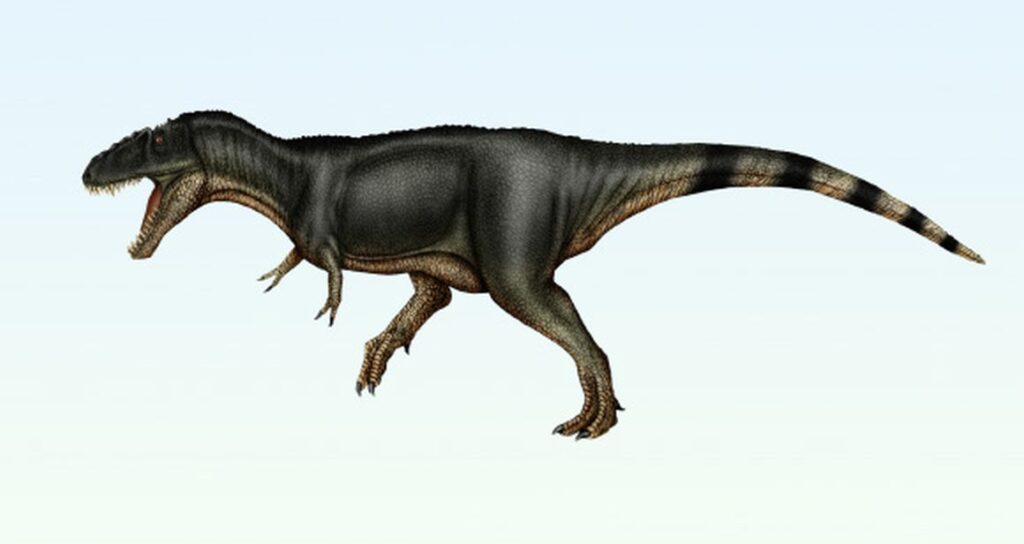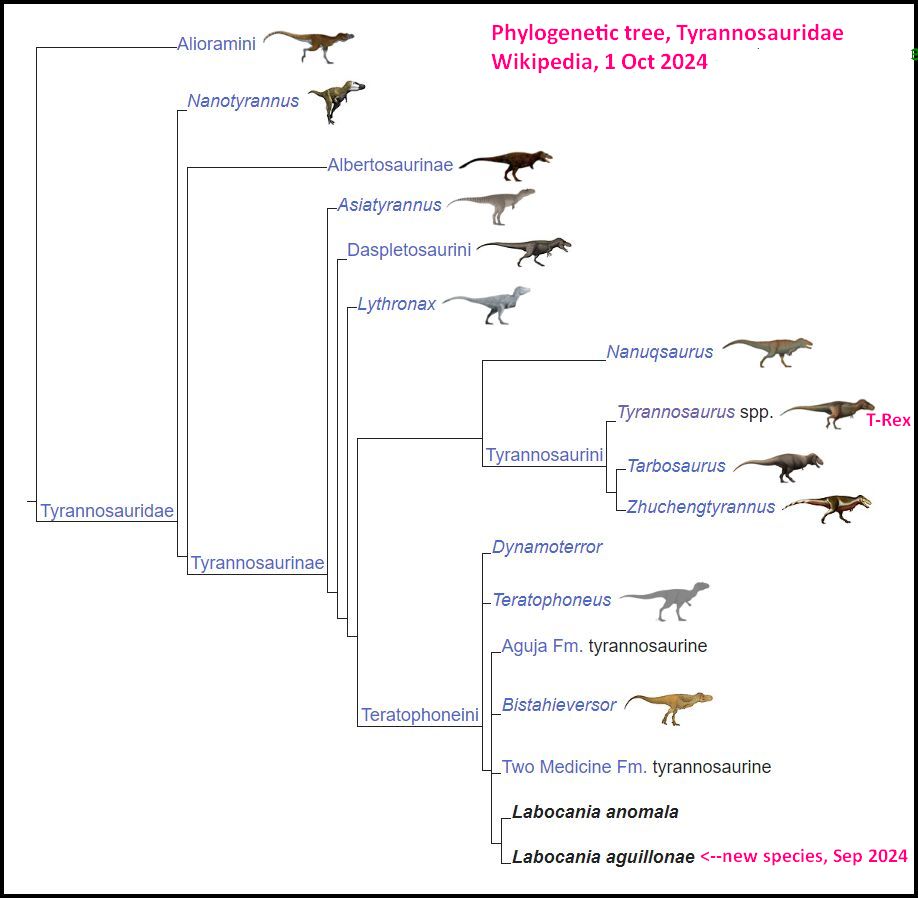
1 October 2024
Did you know that Tyrannosaurus rex was exclusively(*) a North American dinosaur?
He lived during the Campanian–Maastrichtian ages of the late Cretaceous period, 72.7 to 66 million years ago, on the former island continent of Laramidia which is now the western part of North America extending from Canada to Mexico.

Fifty years ago paleontologists found fossils of a T-Rex relative in Baja California, Mexico: Labocania anomala.

This year they analyzed bones in a drawer at the Museo del Desierto that had been found in the Chihuahuan desert in northern Mexico in 2000. The bones were from a new-to-science relative of T-Rex!
Named Labocania aguillonae, the ancient predator was at least 6.3 m (21 feet) in length — relatively small by tyrannosaur standards [and] closely related to Labocania anomala, Bistahieversor sealeyi, and Teratophoneus curriei.
— Sci News: New Tyrannosaur Species Unearthed in Mexico: Labocania aguillonae
Unlike its heavily built cousin [T-Rex], this animal was long-legged and lightly built, with big eyes that may have helped it hunt in low light and a heavy snout for dispatching helpless prey.
… The species has been named Labocania aguillonae after Martha Carolina Aguillón, the local paleontologist who discovered it [in 2000].
— New York Times: A Leggy Tyrannosaur Emerges From a Mexican Desert
Meet Labocania aguillonae in this short video.
Here’s how the new dino fits in the Tyrannosauridae tree of life.

Read more in the New York Times: A Leggy Tyrannosaur Emerges From a Mexican Desert and in Sci News: New Tyrannosaur Species Unearthed in Mexico: Labocania aguillonae.
(*) Note” Relatives of T-Rex have been found in China but not T-Rex himself.